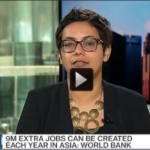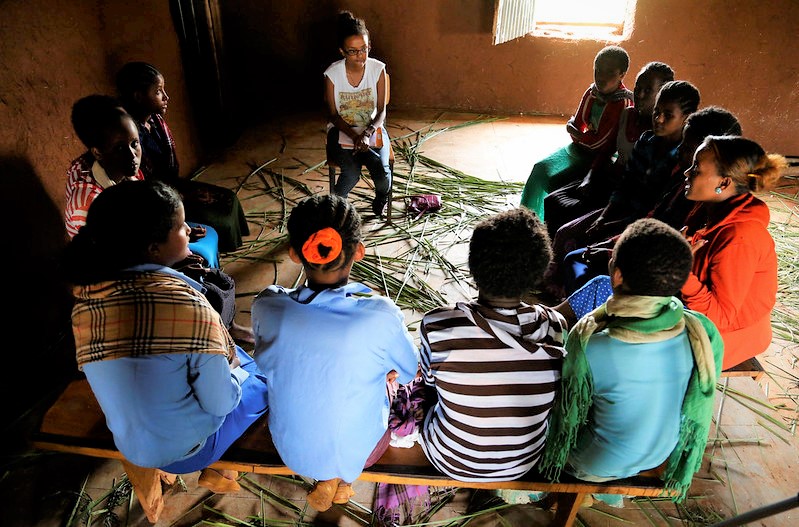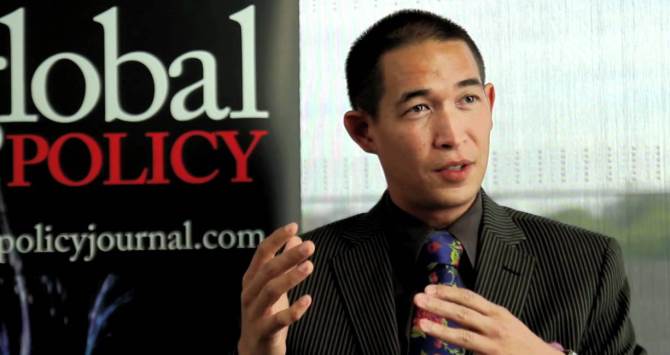Whether they study on one of our MSc programmes or undertake a PhD, after graduation our students disperse across the world to undertake a seemingly endless range of occupations, and apply what they’ve learnt in their time with us. Many go on to work for governments or NGOs, others for international aid agencies or as advisers in the private sector.
 Another popular route is multilateral development institutions like the World Bank, the IMF, or the United Nations, and this is the route Megha Mukim took after completing her PhD with us. Recently, she has co-authored, and joint team led, the World Bank’s Competitive Cities flagship project, the findings of which Megha explains in an interview she did with Bloomberg Business and are also outlined below.
Another popular route is multilateral development institutions like the World Bank, the IMF, or the United Nations, and this is the route Megha Mukim took after completing her PhD with us. Recently, she has co-authored, and joint team led, the World Bank’s Competitive Cities flagship project, the findings of which Megha explains in an interview she did with Bloomberg Business and are also outlined below.
More than 7 million more jobs can be created each year in East Asia if the cities improved their competitiveness, says the World Bank’s report Competitive Cities for Jobs and Growth: What, Who, and How.
An analysis of 750 cities around the world, the report outlines the factors that make cities competitive and prosper, providing a catalog of best practices and data that city leaders can use to benchmark their performance.
With urbanization in East Asia expected to accelerate in coming decades, these tools can help the region’s cities potentially stimulate economic growth in the region if their growth is accompanied by increasing competitiveness, which would include boosting infrastructure, skills sets, and regulatory reforms that would strengthen the investment climate.
“The cities of East Asia have grown faster than anywhere else in the world. The foundation for boosting the competitiveness of those urban centers – integrated planning for denser land use, and improvements in the investment climate – can propel cities as the engines of sustainable growth and job creation,” said Jordan Schwartz, Director of the World Bank’s Singapore Infrastructure and Urban Development Hub, a center of the World Bank Group’s operations and knowledge activities in the areas of infrastructure finance and sustainable urban development.
The report finds that competitive cities did not always overhaul their existing economies in order to advance. Often they simply became better at what they already did, leveraging their comparative advantage, especially when exporting tradable goods and services to other cities and countries.
“The private sector accounts for almost 75 percent of jobs created worldwide. To spur growth and become successful, cities must focus on expanding existing firms, creating new ones, and attracting investors in order to create more jobs, increase incomes of citizens, and grow,” said Anabel Gonzalez, Senior Director of the World Bank Group’s Trade & Competitiveness Global Practice.
The report looks at global and regional trends, comparing different types of cities – by income, sector, region, and industrial mix. It found that competitive cities include more than capital cities, or global centers of commerce. They are often secondary cities that are experiencing rapid industrialization, such as Changsha in China.
With per capita GDP surging from $3,500 in 2000 to more than $15,000 in 2012, Changsha has been able to leapfrog from lower-middle-income to high-income status in a decade, with an economy now comprised of sophisticated, capital-intensive industries. The report talks about the success factors behind this city’s dramatic growth story, and what lessons it may hold for cities across Asia and beyond.
According to Ede Ijjasz-Vasquez, Senior Director of the World Bank’s Social, Urban, Rural, and Resilience Global Practice, “There is no single recipe for becoming a competitive city, however, common patterns can be identified and specific techniques used – including consulting with firms to link infrastructure investments with private sector needs, zeroing in on the skills gaps, and supporting the complementarity between the private and public sector industries – to help cities become more competitive.”
The report also highlights how competitive cities focused their growth strategies on institutions and regulations, infrastructure and land, skills and innovation, and enterprise support and finance. The most successful cities carefully adapted their interventions to their political economy and their respective comparative advantage, as well as to the needs of their domestic firms.
In the most successful competitive cities, such as Saltillo in Mexico, Meknes and Tangier in Morocco, Coimbatore in India, Gaziantep in Turkey, Bucaramanga in Colombia, Onitsha in Nigeria, or Changsha in China:
- Business leaders were consulted about their needs and the constraints they encountered in their operations;
- Infrastructure investments were made in collaboration with the firms and the industries they aimed to serve;
- Skills initiatives were designed in partnership with firms, ensuring that curricula addressed their practical needs; and
- Industries were supported where they had a real commercial potential, throughcollective initiatives with the private sector rather than through the public sector alone.
The report is available at:http://www.worldbank.org/en/events/2015/12/08/competitive-cities-jobs-growth. Funding for the report came from the Competitive Industries and Innovation Program (CIIP).
The Competitive Cities report event was held during Singapore Urban Week, organized by the World Bank in partnership with the Global Environment Facility (GEF) and key partners in Singapore, including the Center for Liveable Cities and IE Singapore.
You can watch Megha’s interview with Bloomberg Busines in full here. The full release from the World Bank can be found here.
Megha Mukim is an Economist working on issues of competitiveness and urban development at the World Bank. After reading for her PhD at the LSE, she taught topics in development at the School of Advanced International Studies in Washington DC, and at Columbia University in New York. She decided to take the plunge into operations and started work at the World Bank in 2012, joining as part of the young professional program. Since joining, she has worked in countries like China, Tanzania, Kenya, Mauritius, South Sudan, Ethiopia and Rwanda. She is also co-author and joint team lead of the Competitive Cities flagship, and is task manager for a USD$50 Million project in Burundi.
Find out more about possible career paths on the LSE Careers Pages of the website.





